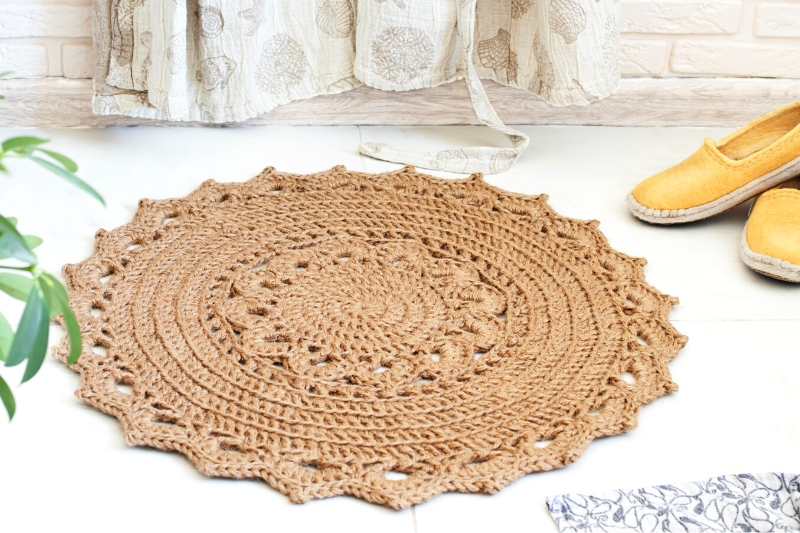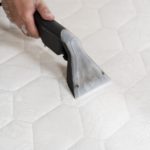Natural fibres. Aren’t they lovely? Especially when it comes to flooring made from grass. No, not a misguided attempt to have an indoor lawn. And definitely not an astroturf carpet.
We’re talking about exotic grasses like sisal, seagrass, and, the material we’re concentrating on today, jute.
Hardwearing and great-looking, jute is a great choice for rug-making. It’s extremely durable and it looks amazing over a solid wood floor or a ceramic tile array.
The bad news is that jute rugs, like most grass-based flooring options, can be quite adept at holding onto dirt. This is because all those little knots provide endless nooks and crannies for dust and grime to gather in.
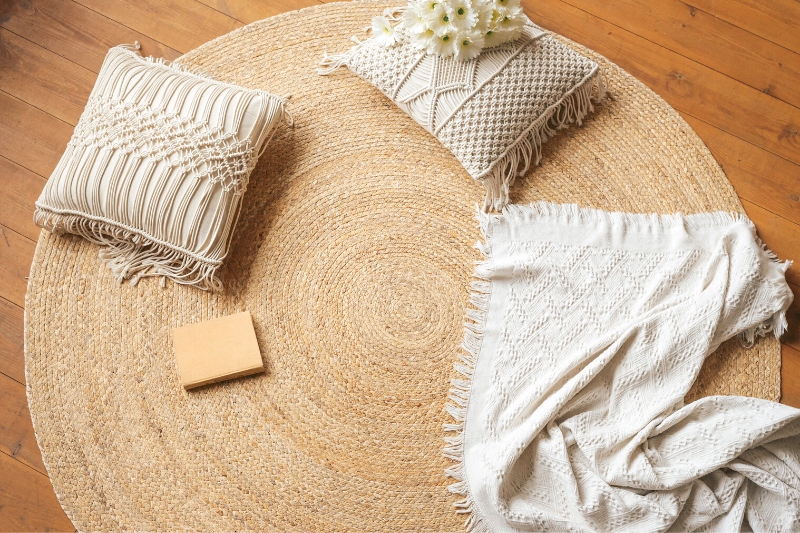
Another piece of bad news is that jute doesn’t like getting wet, so any cleaning method has to be largely dry or damage will result.
The good news is that there are some simple and effective methods you can use to get it clean. We’ll look at what to do when your jute rug gets marked, so, if the worst’s happened to you, don’t panic. Just read on.
How to Clean a Jute Rug Step by Step
Step 1: Shake and beat
Start with the simplest technique. Take it outside and shake it. While you’re there, hang it over a line, and follow Michael Jackson’s rug care advice and Beat It.
A good deal of the dirt that is clinging to the fibres will be worked loose and will fly free into the air.
You may be surprised at how much will come out. Just make sure the wind’s blowing neither toward you nor the house.

Step 2: Vacuum clean
You’ve now got to break out the vacuum cleaner and give the rug a jolly good going over.
If you’ve got a brush attachment, use it, so that you get into all the crevices. It’s well worth running it over the entire surface a few times, as well as all over the back of the rug.
Once you’ve got all the loose dirt off, you know your rug won’t suffer from any worsening marks. You can now get to work on any staining.
Step 3: Spot clean
The chances are, your jute rug will be kept clean just by following the above steps.
If, however, you can see marks left by muddy shoes, you can try this technique. Yes, it does involve a little moisture, but this is OK if you’re extremely stingy with the application.
What you need is some diluted white vinegar. One part vinegar to four parts water should do it.
Then take a clean cloth and dip into the solution.
Next, dab gently at the marks. When you’ve got the marks covered, use a small amount of clean cold water in a spray bottle to rinse those blemishes away.
Cleaning Stains from a Jute Rug
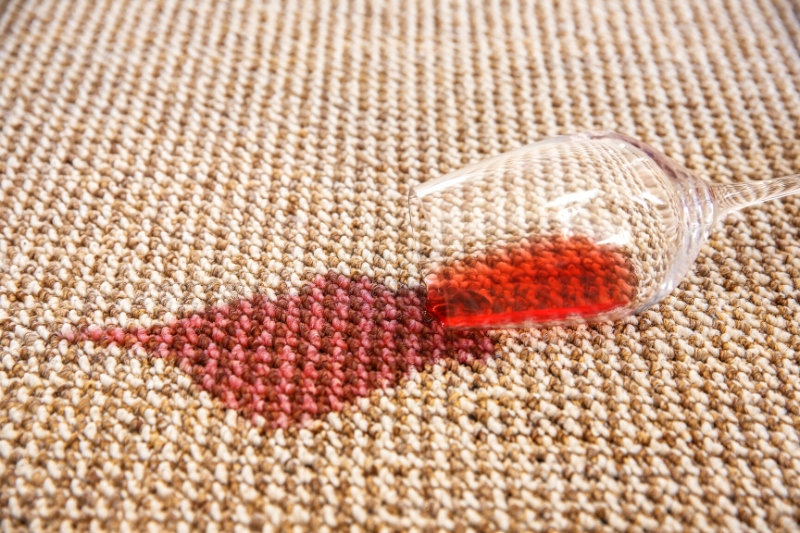
OK, those first three steps are all super and should have a normally-soiled rug clean in no time at all.
However, what do you do if some clumsy fool – sorry, poor unfortunate – spills red wine all over your prized jute rug?
Here’s what. Act fast. Grab a paper towel and soak up the worst of it, hopefully before it seeps in. Don’t rub – just dab. You want to absorb the offending stuff, not push it into your rug’s fibres.
If it’s all too late and the stain’s got in there and your whole world’s ruined, there’s no alternative but to sit on the floor and screech like a gripe-addled infant.
Oh, hang on, you can always try this: corn starch, liberally sprinkled on. Leave in place for a couple of hours or so, and some of that claret caper will leach out of the rug.
You can then press your vacuum cleaner back into service and suck up all those red blobs of starch.
Spray if you’re stuck
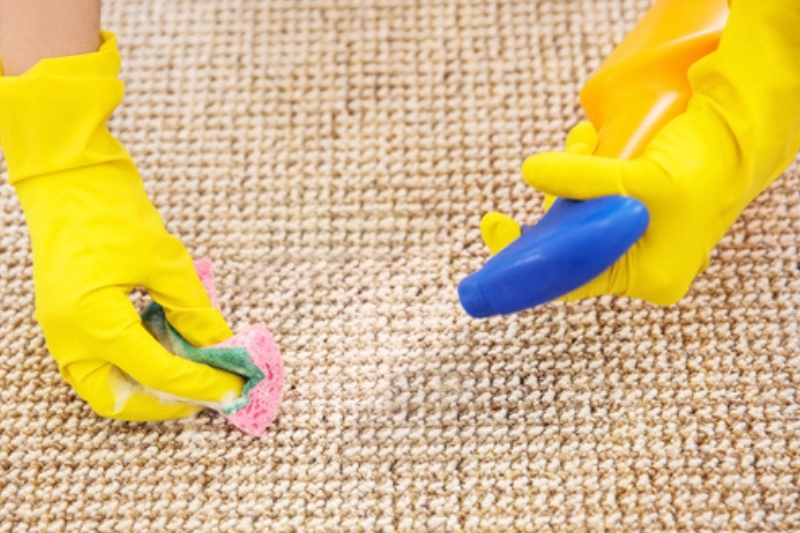
If all this fails, you might have to use the fallback option and use a stain-removing spray. Well worth checking the rug’s care instructions before you do, and, as ever, try it on an inconspicuous section for a few tentative test sprays first.
Whatever you do, don’t use a steam cleaner or carpet shampoo on it. It won’t end well. The fibres will probably discolour, and may even weaken and break.
Final option? Well, your true final option is to buy a new rug. But, before you do this, consider this suggestion first. Just turn it over. Most jute rugs are reversible.
What Is Jute?
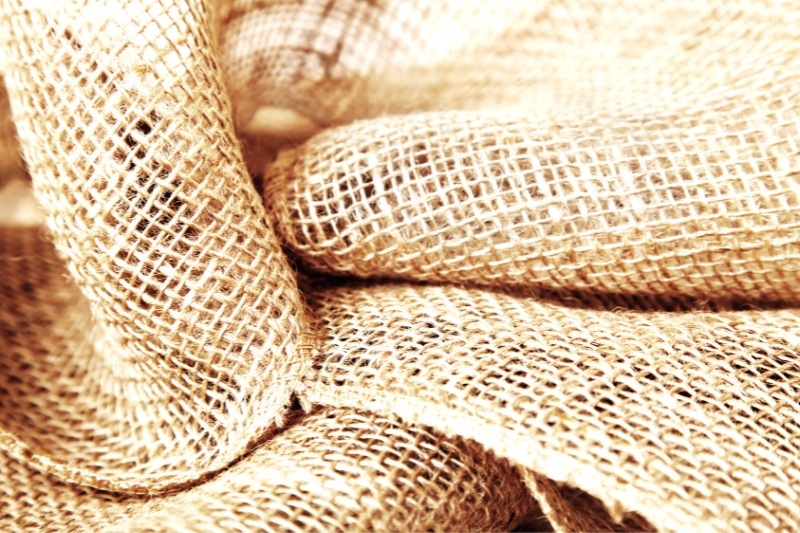
We can’t leave without having a few words explaining what your rug’s actually made from.
Jute is a vegetable fibre, produced by a member of the mallow family of plants (which also includes cotton among its members).
It is spun into a yarn, which is then used to make rugs, or is used in furniture stuffing, or woven into hessian.
It’s much-loved for its natural warmth and for its sustainability, being a fast-growing crop that needs little cultivation to thrive in the right conditions, most notably in India and Bangladesh, where it has been used for over 5000 years.
Keeping Jute Looking Beaut
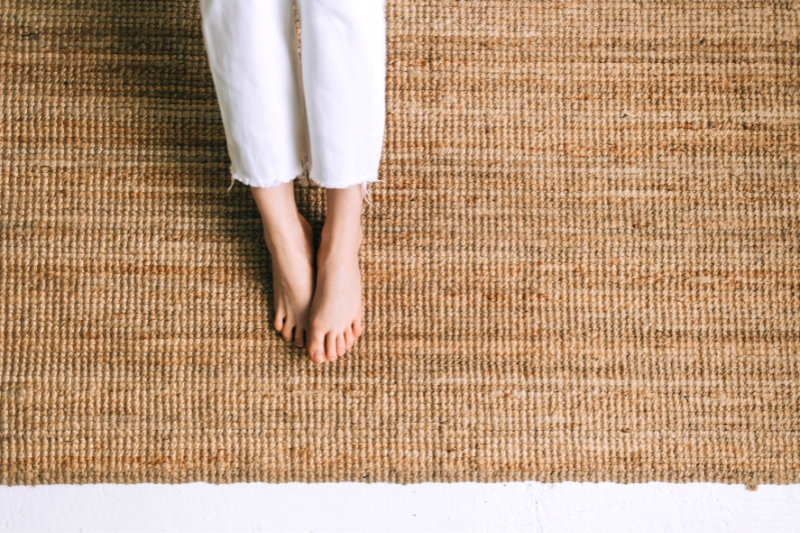
Jute’s one of those materials that doesn’t have to be ultra-clean to look good. Its natural roughness means it can shoulder a bit of lived-in charm.
This means that you don’t need to worry too much about every little speck that finds its way down there. However, it’s a good idea to regularly shake and beat, just to keep it looking presentable.
Now you know that white vinegar and water will, with careful application, help deal with stains, you might be tempted to have jute everywhere.
However, it might be sensible not to have jute on the floor where a lot of red wine, coffee or other super-stainers might be swilled.
You need to be aware of jute’s limitations. It does look fab, no question. But then so do a lot of other options, some of which may be a lot easier to clean.
One of the secrets of a great-looking house is the right material in the right spot. And a quick hand with the paper towel.

Martin’s life revolves around films, dogs and food, but rarely all at the same time. At least two out of these three like to give clothes and furniture a hard time, and Martin enjoys discovering and writing about new ways to stop them doing their worst.
